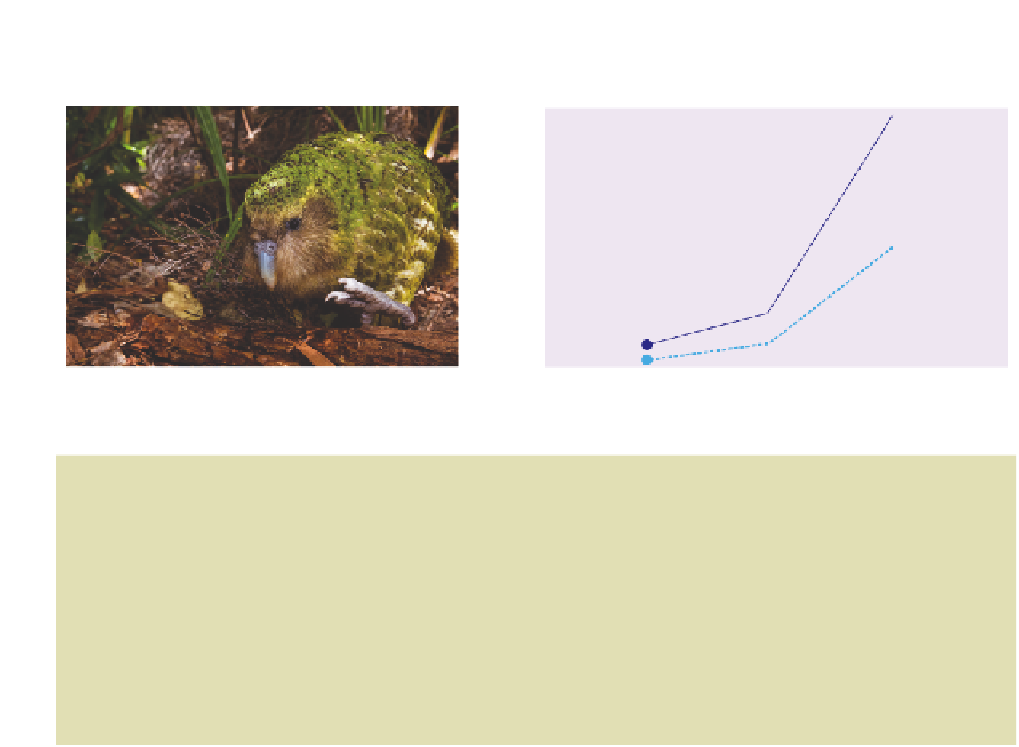Biology Reference
In-Depth Information
250
200
150
100
50
0
all females
20 females
none
Breeding management
Fig. 15.5
Sex allocation and population recovery in the kakapo (
Strigops habroptilus
). The kakapo is a highly
endangered flightless nocturnal parrot, endemic to New Zealand. Supplementary feeding of females led to the
offspring sex ratio changing from 29% to 67% males. This can be explained by the Trivers and Willard (1973)
hypothesis, because supplementary feeding would have led to females being in better condition, selecting them
to produce sons, as with the red deer of Fig. 10.9. A new supplementary feeding programme was designed to
raise the weight of females above the weight threshold (1.5 kg) above which they reproduce, but to keep them
below the weight at which they produce an excess of males (2 kg). The figure shows the estimated number of
years for the kakapo population to recover to 150 individuals, for different amounts of supplementary feeding,
and from either
ad libitum
feeding (dark blue line) or the redesigned feeding programme (light blue dashed
line). From Robertson
et al
. (2006). With permission of the Royal Society. Photo © Mark Carwardine / naturepl.
com
psychology, linguistics, archeology and others (Gintis
et al
., 2005; Henrich &
Henrich, 2007; Dunbar & Barrett, 2009; Nettle, 2009).
(7)
The history of life on earth.
The view that major evolutionary transitions
have been driven by an overcoming of the problem of cooperation (Chapter 11)
offers a more profound vision of the history of life on earth than previous
alternatives, such as the succession of different taxonomic groups (e.g. the
Age of Fishes led to the Age of Reptiles, which led to the Age of Mammals;
Bourke, 2011).
Who would have thought, just a few years ago, that we would be able to study
sexual conflict at the molecular level; or that we would be using experiments with
robotic fish to model human crowd control; or that microbes would become
wonderful experimental models for studying the evolution of social behaviour; or
that Hamilton's kin selection ideas could be applied to our understanding of human
diseases? With the advent of these exciting ideas, and the use of new experimental
and analytical techniques, it seems to us that these are the very best of times to be a
behavioural ecologist.











































